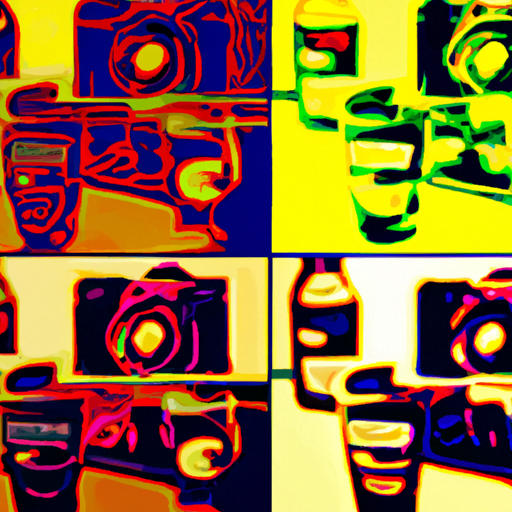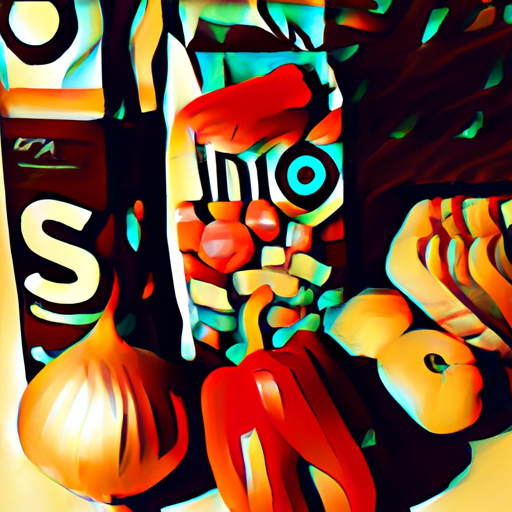
-
Table of Contents
- Exploring Neural Style Transfer for Customized Design Effects
- Understanding Neural Style Transfer
- Applications of Neural Style Transfer in Design
- 1. Graphic Design
- 2. Web Design
- 3. Fashion Design
- Case Studies: Real-World Examples
- 1. Prisma App
- 2. Adobe Creative Cloud
- The Future of Neural Style Transfer
- 1. Real-Time Style Transfer
- 2. Custom Style Creation
- Summary
Exploring Neural Style Transfer for Customized Design Effects

Design plays a crucial role in capturing the attention of consumers and conveying the essence of a brand. In today’s digital age, where visual content dominates various platforms, businesses are constantly seeking innovative ways to create unique and eye-catching designs. One emerging technique that has gained significant attention is neural style transfer. This article will delve into the concept of neural style transfer and explore its potential for customized design effects.
Understanding Neural Style Transfer
Neural style transfer is a technique that combines the content of one image with the style of another, resulting in a new image that merges the two. It utilizes deep neural networks, specifically convolutional neural networks (CNNs), to extract and manipulate the visual features of images. The process involves two main components: the content image and the style image.
The content image represents the subject or object that the design aims to depict, while the style image represents the desired artistic style or visual effect. By applying neural style transfer algorithms, the content image is transformed to adopt the style of the style image, creating a unique and visually appealing design.
Applications of Neural Style Transfer in Design
Neural style transfer offers a wide range of applications in the field of design. Let’s explore some of the key areas where this technique can be utilized:
1. Graphic Design
Graphic designers can leverage neural style transfer to create captivating and personalized designs. By combining the content of a specific graphic with the style of a renowned artist or a popular design trend, designers can produce visually stunning and unique graphics that stand out from the crowd.
For example, a graphic designer working on a poster for a music festival can use neural style transfer to merge the content of the poster, such as the band names and event details, with the style of a famous album cover or a renowned artist’s signature style. This approach adds a personalized touch to the design, making it more memorable and engaging for the target audience.
2. Web Design
Web designers can also benefit from neural style transfer to create visually appealing websites. By applying the style of a particular design trend or a brand’s visual identity to the content of a website, designers can enhance the overall user experience and leave a lasting impression on visitors.
For instance, a web designer working on an e-commerce website can use neural style transfer to incorporate the style of a luxury brand into the layout and visual elements of the website. This technique helps to create a sense of exclusivity and elegance, aligning the design with the brand’s image and attracting the target audience.
3. Fashion Design
Neural style transfer can revolutionize the world of fashion design by enabling designers to experiment with different styles and patterns. By merging the content of a garment design with the style of various fashion icons or historical fashion movements, designers can create unique and avant-garde fashion pieces.
For example, a fashion designer looking to create a collection inspired by the Art Deco movement can use neural style transfer to infuse the geometric patterns and bold colors associated with Art Deco into their designs. This approach allows designers to push the boundaries of traditional fashion and create visually striking pieces that resonate with consumers.
Case Studies: Real-World Examples
Several real-world examples demonstrate the effectiveness and potential of neural style transfer in customized design effects. Let’s explore a few notable case studies:
1. Prisma App
The Prisma app gained immense popularity in 2016 by leveraging neural style transfer to transform ordinary photos into artistic masterpieces. The app allowed users to apply the styles of famous artists, such as Van Gogh and Picasso, to their photos, creating visually stunning and personalized images.
The success of the Prisma app showcased the demand for customized design effects and the potential of neural style transfer in the consumer market. It demonstrated that users are eager to explore and experiment with different artistic styles to enhance their visual content.
2. Adobe Creative Cloud
Adobe, a leading software company in the design industry, has also recognized the value of neural style transfer. They integrated neural filters into their Creative Cloud suite, allowing designers to apply various artistic styles to their designs with a single click.
This integration simplifies the design process and empowers designers to explore different styles and effects without the need for extensive manual manipulation. It saves time and effort while providing designers with a vast array of creative possibilities.
The Future of Neural Style Transfer
As technology continues to advance, the potential of neural style transfer in customized design effects is only expected to grow. Here are some key trends and developments to watch out for:
1. Real-Time Style Transfer
Currently, neural style transfer algorithms require significant computational power and time to process and generate the final design. However, ongoing research aims to develop real-time style transfer techniques that can be applied instantaneously, allowing designers to see the results in real-time.
This development would revolutionize the design process, enabling designers to experiment and iterate quickly, resulting in more efficient and dynamic design workflows.
2. Custom Style Creation
While neural style transfer currently relies on pre-existing style images, future advancements may allow designers to create their own unique styles. This would provide designers with even more creative freedom and the ability to develop their own visual identities.
Imagine a scenario where a designer can train a neural network on their previous designs and create a personalized style that reflects their unique artistic vision. This level of customization would elevate the design process and result in truly one-of-a-kind designs.
Summary
Neural style transfer offers immense potential for customized design effects across various industries. From graphic design to web design and fashion design, this technique allows designers to merge the content of their designs with the style of renowned artists, design trends, or historical movements.
Real-world examples, such as the Prisma app and Adobe Creative Cloud, demonstrate the effectiveness and popularity of neural style transfer in creating visually stunning and personalized designs. As technology advances, we can expect real-time style transfer and the ability to create custom styles to further enhance the capabilities of this technique.
By embracing neural style transfer, designers can unlock a world of creative possibilities and captivate audiences with unique and visually appealing designs.
